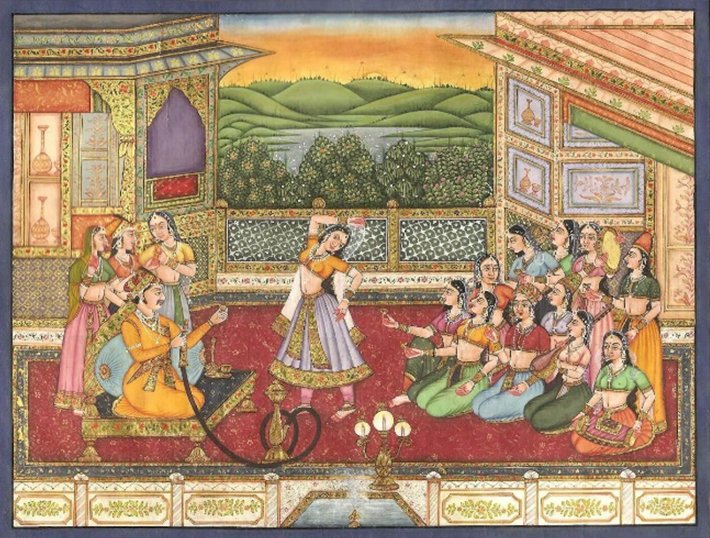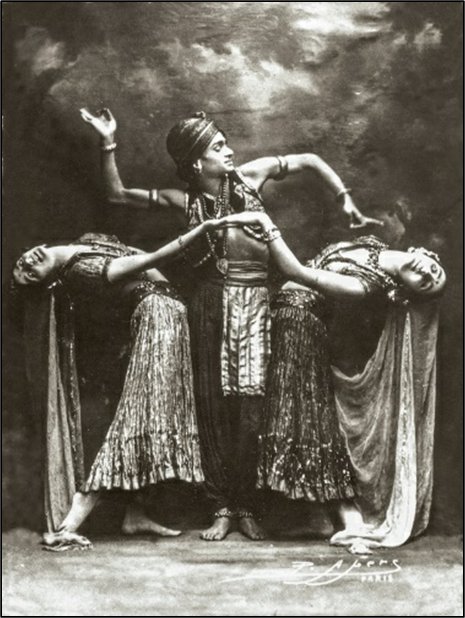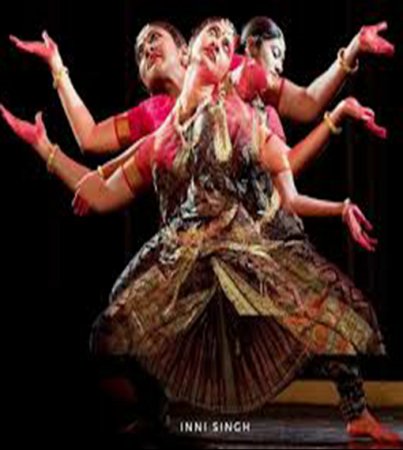
|
 |

|
 |
Comparative study of traditional presentations and thematic presentations - Niyati Visal April 16, 2020 (First prize winner in junior group of the Nrutya Shabda Essay Writing Competition, 2019-20 organized by Samvaad Blog of Swarada Dhekane and Loud Applause E-Magazine of Neha Muthiyan) Art is a tool of expression, a product of humankind's intellectual and emotional evolution. The purpose of a particular art form dictates the course it takes over history. Among the various arts, classical dancing has experienced a tumultuous journey - from being equated with glamour and glory to being considered disreputable and inappropriate. Irrespective of the status dance holds in the society, it takes shape in the space society allows it to exist in. In the context of Indian classical dance, religion has been a driving force for the development of dance. Most of the dances began as part of the devadasi tradition. Devadasis (or maharis in Odisha) danced in temples to please the gods and subsequently danced in courts for the kings and patrons. Dances like Sattriya and Manipuri gained ground with the Bhakti movement between the 15th and 17th centuries. In the case of Kathakali and Kuchipudi, the purpose of these dance-drama traditions was to enlighten the common people on the various instances in Hindu mythology.  Practice of dance with a set purpose and the active contribution of scholars led to the structuring of dance forms and them being presented within a repertoire. Technically, such a traditional presentation was already 'thematic' in nature. The traditional presentations were influenced by and responded to several aspects.
 Uday Shankar Even though the revived dance styles had to be Indian, they had to fit into the boundaries of modesty, glamour and acceptability chalked by the colonisers. Moreover, the dances were now open for a diverse audience - most still succumbing to the bad reputation they had gained by then and not being appreciated in their entirety. With the king, the temple deity and the royal ceremonies all gone, dancers had to now adapt their performances to the diverse purposes a stage served. Stalwarts like Rukmini Devi Arundale and Uday Shankar were probably the first ones to create thematic presentations to attract the Indian and then, the Western audience into the world of Indian dance. Influence of the Western arts was immense and a thematic presentation may also have been a more acceptable and "appropriate" way of presenting Indian dance. The period post-Independence saw the rise of thematic presentations alongside traditional ones. Today, classical dance serves multiple purposes. It is no more just a worship or ritual. Classical dance is now competing with music, drama, films and dance styles from all over the world. It is now presented before a trained as well as an untrained eye. Commercialisation and competition from popular genres has pushed dancers to rethink the content they portray. Globalisation and subsequent Westernisation has invited new ideas as well as reinterpreted and redefined existing concepts. Although fortunately there are enough audiences in the country who value and appreciate traditional performances, thematic presentations have become each dancer's individual niche to experiment with choreography, music, set and lights. Ideas of feminism, body positivity, LGBTQI rights, sexuality, and equality are trickling into performances. Dancers excavate the lengths and breadths of the scope of their dance style to present stories / characters that exist in mythology and to depict the above ideologies - in an attempt to assert the existence of righteous ideologies in one's culture way before the West made it a trend. Productions based on Shikhandi, Draupadi, Sita, Pootana, Karna and Soorpanakha are some examples where traditional varnams, shabdams or any such pieces do not do justice to it. Some have experimented with philosophical or cultural concepts - 'Thari- the Loom' based on weaving of a saree by Malavika Sarukkai, 'Dwita - The Duality of Life' by Rama and Dakshina Vaidyanathan, 'Tanmatra' based on the Five Elements of Earth by Rohini Bhate, 'Vande Mataram' by Sridevi Nrityalaya and so on.  Soorpanakha by Dakshina Vaidyanathan Though traditional presentations remain the core of learning and performing classical dance, thematic presentations is a response to the constantly evolving purpose of our dances and diverse demands of a globalised audience which traditional presentations take a while to attract. Our dances have now entered an era where they are audience driven, perform to give an experience, and to entertain. Thematic presentations, even though conceptually borrowed from the West, have given dancers the opportunity to use their training into creating something that goes beyond tradition and yet maintains the essence of their art form. Niyati Visal is a student of MA (Bharatanatyam), Lalit Kala Kendra, SPPU, Pune. Post your comments Please provide your name and email id when you use the Anonymous profile in the blog to post a comment. All appropriate comments posted with name & email id in the blog will also be featured in the site. |